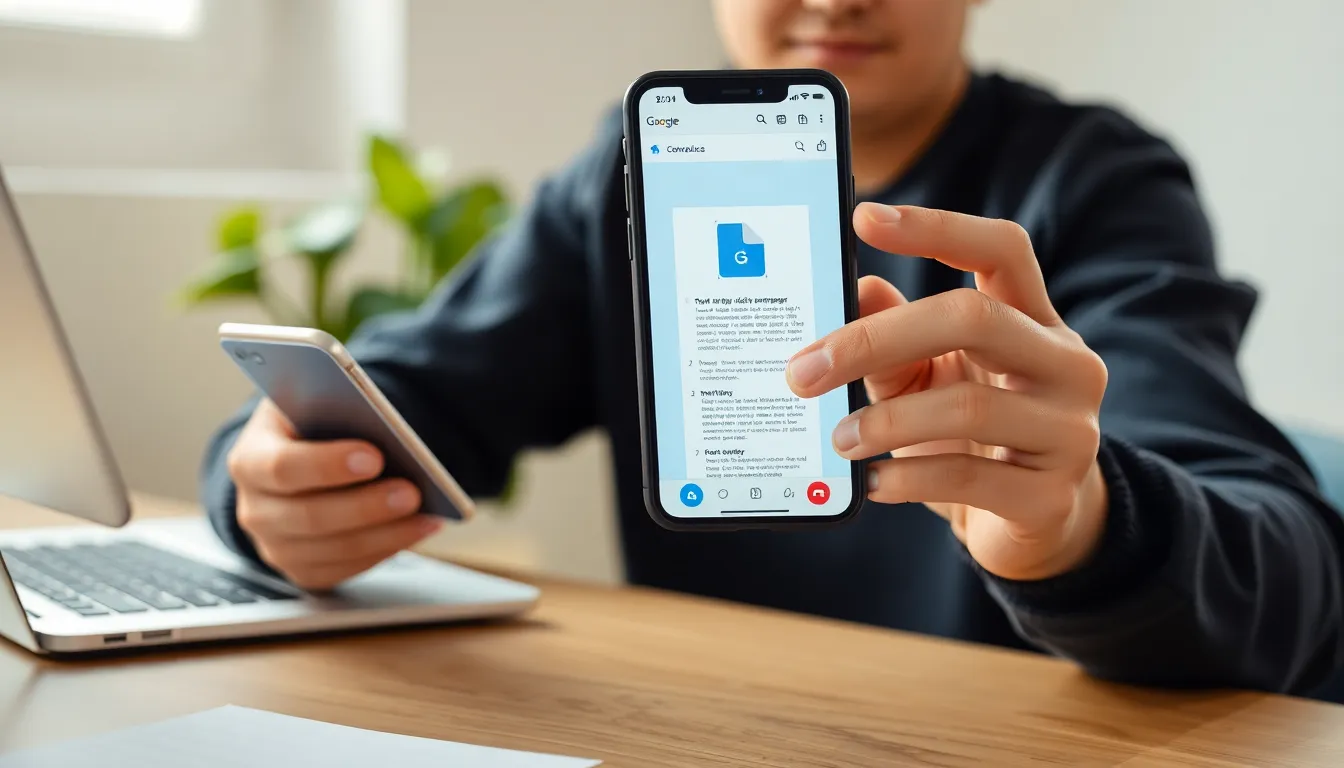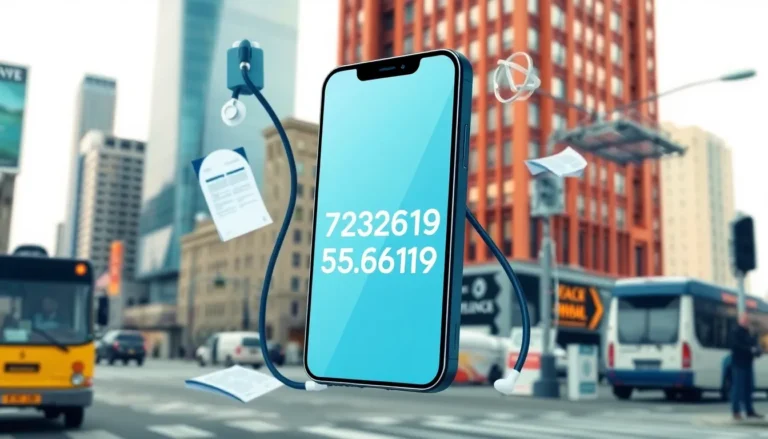Ever found yourself staring at your iPhone, wondering how to move that important Google Doc into the Files app? You’re not alone. Many people struggle with this seemingly simple task, but fear not! With a few quick steps, you’ll have that document safely tucked away in your Files app, ready for on-the-go access.
Table of Contents
ToggleUnderstanding Google Docs on iPhone
Google Docs provides a powerful tool for document creation and collaboration directly from an iPhone. Users can create, edit, and share documents seamlessly across devices.
Overview of Google Docs Functionality
Google Docs allows users to collaborate in real-time. Users can access documents from any device with internet connectivity, enabling flexible work environments. The app supports various features like templates, voice typing, and commenting for enhanced productivity. Document sharing can occur through simple link generation or direct email invitations. Offline editing is available, ensuring that work continues even without internet access.
Importance of Saving to Files
Saving Google Docs to the Files app enhances document accessibility. Users can organize documents efficiently within folders, making retrieval quick and straightforward. Storing files locally allows access without relying on an internet connection. Document management becomes easier as users consolidate their files in one location. Quick sharing from the Files app simplifies collaboration across other apps.
Steps to Move Google Doc to Files on iPhone


Transferring a Google Doc to the Files app on an iPhone involves a few straightforward steps. Follow this guide for seamless movement of your documents.
Accessing Google Docs App
Open the Google Docs app on the iPhone. This app provides access to all Google Docs associated with the user’s account. Tap on the document you want to transfer to start the process. It’s essential to ensure that the document is fully loaded before proceeding to the next step.
Selecting the Document
Scroll through the list to find the desired document. Once located, tap the three dots icon in the upper corner of the screen. This opens a menu with additional options. Choosing “Select” allows for identification of the document intended for transfer. A checkmark will appear next to the selected document, confirming the choice.
Using the Share Option
Tap on the share icon after selecting the document. An array of sharing options will display. Choose “Send a copy” to initiate transferring. A prompt will appear asking how to share the document. Select “Save to Files” to finalize the process and designate where the document should be stored in the Files app. This action ensures accessibility and organization of files for future use.
Alternative Methods to Move Google Docs
Several alternative methods exist for transferring Google Docs to the Files app on an iPhone.
Using the Google Drive App
The Google Drive app provides a practical way to move documents. Users can open the app and locate the desired document. Once found, tapping the three dots icon opens additional options. From there, selecting “Open in” allows users to choose the Files app for transfer. This method streamlines the process and enables users to save the document in their preferred folder within the Files app, ensuring easy access.
Using Email to Transfer
Email serves as another effective method for transferring Google Docs. Users can open the Google Docs app and select their document. A quick tap on the share icon opens several sharing options. Choosing “Send via email” prompts users to enter their email address. After sending the document as an attachment, users can access their email on their iPhone. Once the email is received, tapping the attachment allows users to open it in the Files app and save it to their desired location.
Tips for Organizing Files on iPhone
Organizing files efficiently on an iPhone can enhance productivity and simplify access. Emphasizing clarity ensures users can find their documents with ease.
Creating Folders in Files
Creating folders within the Files app helps categorize documents. Users can tap the “Browse” tab, followed by the “…” icon to reveal options. Selecting “New Folder” allows for naming the folder according to content type. Custom folder names facilitate organization, making specific documents easier to retrieve. Establishing a system with folders based on project or document type can streamline file management on the device.
Utilizing Tags for Easy Search
Applying tags to documents enhances search functionality significantly. Users can tap the “Share” icon, then select “Add Tags” to label files intuitively. Choosing descriptive tags ensures quicker identification during searches. Common tag examples include project names or key content words. Prioritizing tags based on usage frequency aids in maintaining an organized filing system on the iPhone. Streamlining access becomes straightforward as users can locate needed documents promptly using these tags.
Transferring Google Docs to the Files app on an iPhone is a straightforward process that enhances document accessibility and organization. With just a few taps users can ensure their important files are readily available for offline use. The various methods outlined in the article provide flexibility in how documents can be transferred whether through the Google Docs app Google Drive or even email.
Organizing documents within the Files app by creating folders and using tags further boosts productivity. By implementing these strategies users can streamline their document management making it easier to retrieve and share files as needed. Embracing these techniques empowers iPhone users to maximize their efficiency while working with Google Docs.






